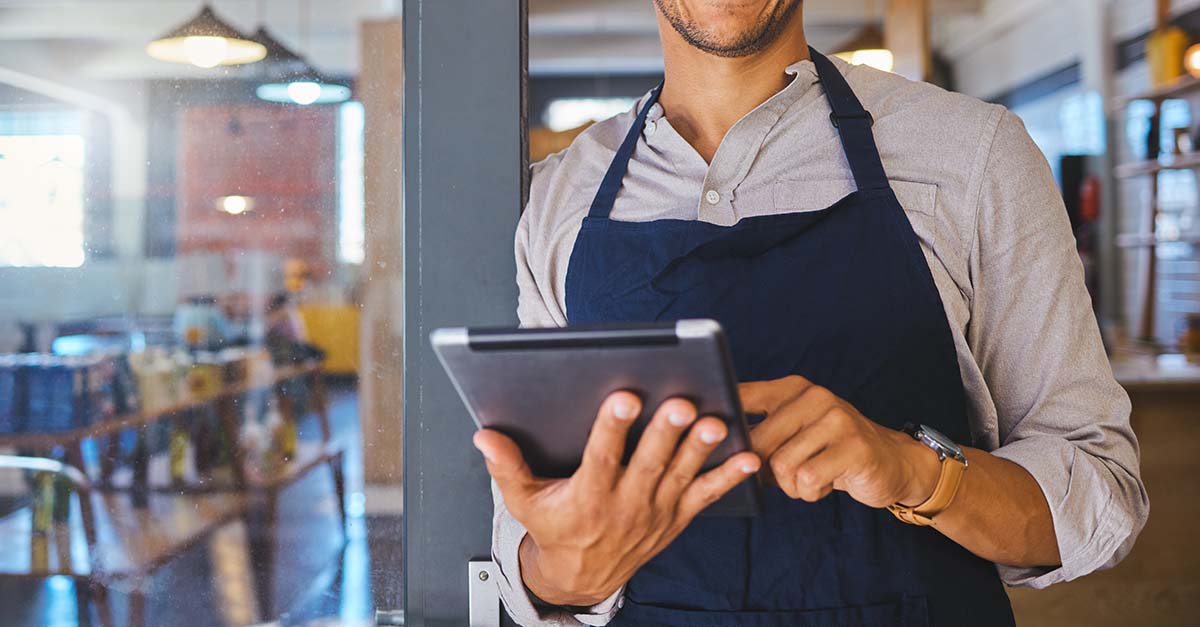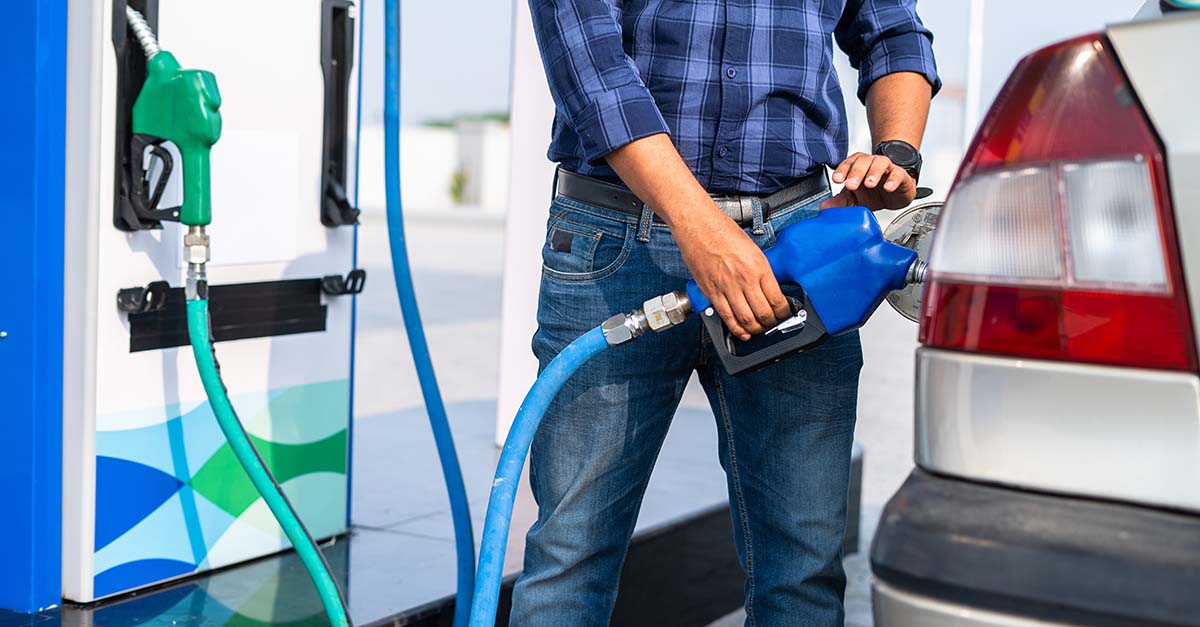Prices are rising, but retailers aren’t the bad guys
Navigating inflation and supporting local businesses with Upside

The Upside Team
Financially speaking, everyone is feeling the squeeze right now.
When the average price of regular gasoline nationally hit $4.17 per gallon in mid-March – more than half of the national minimum wage – the headlines focused on how and why this would impact consumers. The untold story was how rising costs and tightening margins impacted businesses during those same weeks, when many fuel retailers were actually selling gallons at a loss.
Likewise, as the cost of food continues to rise, increases are hitting both consumers and food retailers. February of 2022 saw the fastest monthly gains in food prices since the early days of the pandemic. Consumers are forced to change their buying habits, and food retailers like restaurants and grocery stores are having difficulty staying profitable.
These times are hard on everyone.
Beyond swapping driving for cycling or becoming vegetarians (although we won’t discourage you from giving it a try!), what can we do to help everyone do better?
Let’s zoom out for some perspective.
The biggest inflation challenges for people and businesses
Looking at the long list of macroeconomic forces pushing consumers and businesses today, it’s no surprise that local markets are feeling the squeeze from inflationary pressures.
A new Gallup poll found that roughly one in five Americans lists either the high cost of living/inflation or fuel prices as the most important problem facing the U.S. today. Inflation is now at a 40-year high – having increased 8.3% over the past 12 months – driven mostly by gas, groceries, and shelter, categories that account for 60% of the average household’s total expenses.
Supply chain issues
The supply chain is still in disarray from the effects of COVID-19, meaning materials and goods are still costing more and taking longer to travel between suppliers, manufacturers, and retailers. Because our demand for these goods outstrips the supply, prices continue to rise.
Inflation has kept in lock-step with these price increases because, at the same time, we’ve experienced unprecedented government spending to reinvigorate the economy in the wake of COVID-19.
In a recent nationwide survey, Upside found that 53% of grocers say that supply chain challenges and associated costs are their biggest business challenge right now. And 54% of grocers say that acquiring more new customers is their number one priority.
Consumers are looking for more value as prices continue to rise, but, unfortunately, few retailers are able to give them the value they’re looking for while staying profitable. In fact, for food retailers, supply chain costs have risen faster than prices.
This creates a suboptimal experience for customers, which means these retailers miss out on customers who may look elsewhere for better deals. And so the cycle continues.
Meanwhile, at the pump, Russia’s war in Ukraine has caused significant oil supply issues that only compound those felt as a result of COVID-19. The U.S. signed an executive order to ban the importation of Russian oil. Meanwhile, Russia – the world’s third-largest oil producer – threatens to cut off its main gas pipeline to Europe. Acts like these have caused the global price of oil to skyrocket, causing the downstream impact we see on gas prices. Fuel retailers operate on thin margins even in the best of times, and, during the height of the supply crisis in March 2022, many stations were actually selling gallons at a loss.
Labor shortages
As businesses struggle to keep up with the rising cost of raw goods, those costs are compounded by continued labor shortages.
Business Insider said it best: "Labor costs are partially the cause of these rising prices. A truck-driver shortage is making transportation more expensive, while restaurants, grocery stores, and factories are struggling to stay fully staffed. Processing plants and farms are facing the same problems. For example, chicken farms don't have enough employees, so they're struggling to process birds quickly."
Changes in buying behavior
Wallets and budgets are tighter, and it's painful all around.
Larger companies like Walmart have a lot more bargaining power than most retailers do, and can manage to keep costs lower than their competitors. They’re doubling down on their reputation as “America’s Low Price Leader” to attract customers who are looking for a break from inflationary pricing. In fact, they’re offering 30% more discounts in their stores this quarter compared to last year.
Smaller retailers without Walmart’s clout are doing everything they can to work around these market obstacles and stay afloat, which for now includes:
- Raising prices to cover rising costs
- Working regular or extended hours with fewer employees
- Limiting assortments because they can’t restock all their usual items
In response, consumers are tightening their budgets and changing their spending behaviors accordingly. We’ve seen consumers:
- Boycott higher local prices
- Travel to out-of-the-way destinations for cheaper goods
- Buy what’s available, but at less frequent intervals
Sadly, these options are less convenient for consumers and can hurt local businesses. And less local commerce means less money stays in the community.
The win-win-win solution
Never in American history have consumers and businesses dealt with the effects of inflation, supply chain issues, pandemics, and war all at the same time.
Consumers are looking to make each dollar go further. Businesses are looking for ways to retain customers and protect margin. There’s a way to help everyone – retailers, consumers, and communities – all at once.
That’s where Upside comes in. A two-sided marketplace that equally benefits retailers and consumers.
For retailers. To date, we’ve driven $300M in incremental profit to merchants across the nation. Upside works within every retailer’s profit margins (even as they fluctuate) to generate profitable, personalized cash back offers that drive value-seeking consumers right through their doors. Today when margins are tighter than ever, this is a profitable way to convince each consumer to come in-store and shop. Retailers only pay when Upside performs, so we don’t earn a cent until our retailers and app users do first.
For consumers. Upside provides consumers with cash back on grocery, fuel, and restaurant purchases. Because we work with each retailer, we’re able to offer 2 - 3x more value than any other cash back app. It’s an always-on product, so you’ll earn cash back every time you buy. We’ve driven $200M in cash back to date – at gas stations, grocery stores, and restaurants – in a way that protects businesses, too. Upside is a product you can feel good about.
More than 30 million people have access to Upside offers at 45,000+ businesses nationwide.
Reach out to learn more about how we can help you weather whatever life throws our way.
Get started with Upside.
Share this article:
The Upside team is made up of data scientists and industry experts who are passionate about delivering empowering content to our readers. With a focus on providing practical insights and meaningful perspectives, we create engaging materials across a wide range of topics. From exploring industry trends and offering expert analysis to sharing useful tips and inspiring ideas, our team works diligently to provide you with the information you need to thrive.
Request a demo
Request a demo of our platform with no obligation. Our team of industry experts will reach out to learn more about your unique business needs.










.png)




